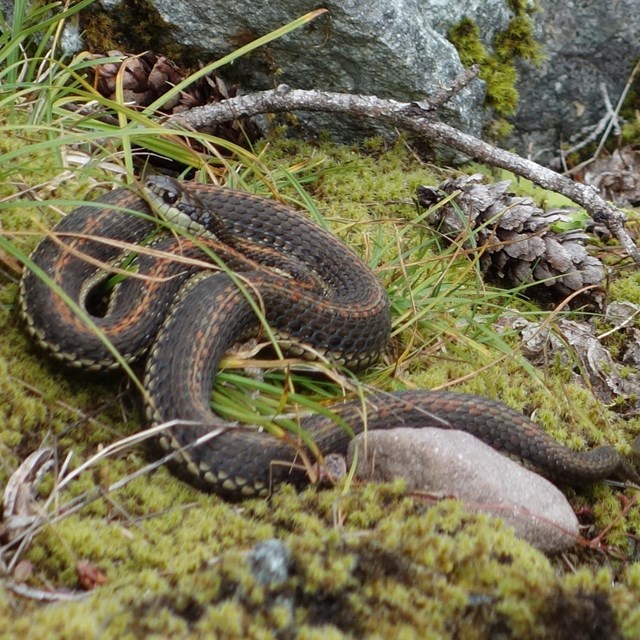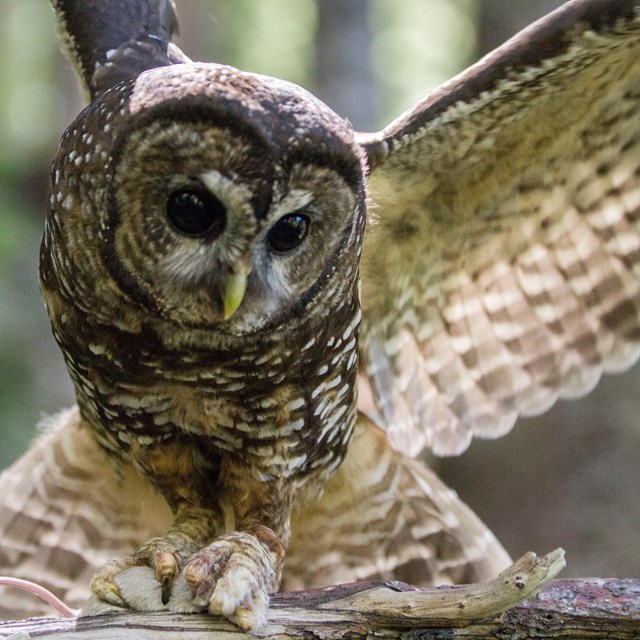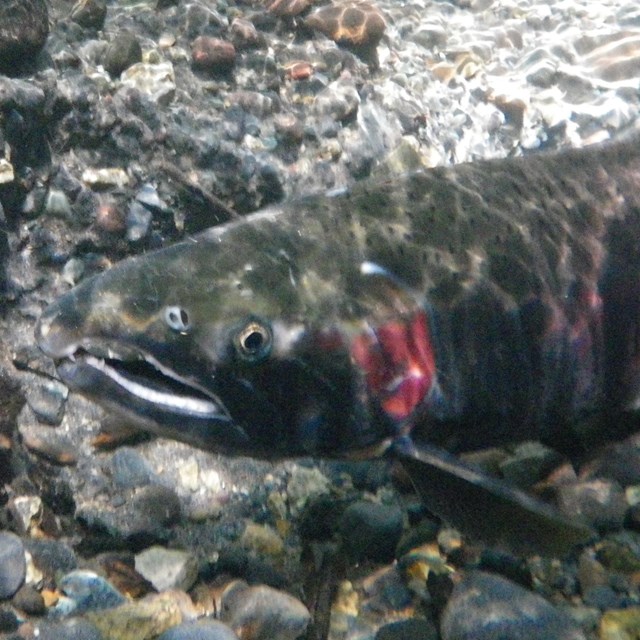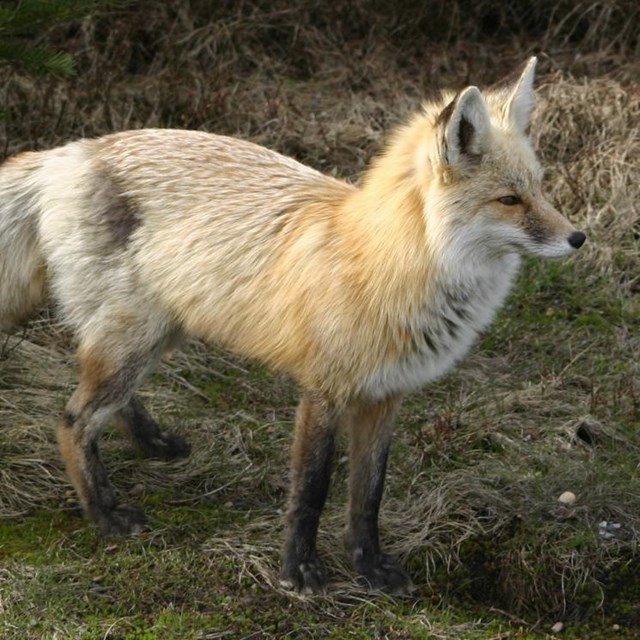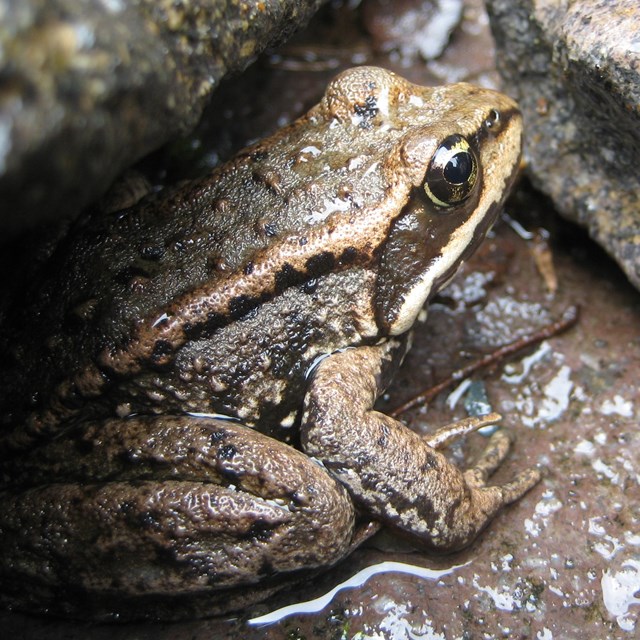Wildlife ObservationsSee an animal, bird, or other wildlife in the park? Use the Mount Rainier Wildlife Observation form to report your sighting! Any wildlife can be reported, but species of particular interest include any owls, peregrine falcon, golden eagle, northern goshawk, white-tailed ptarmigan, harlequin duck (especially female with chicks), Cascade red fox, fisher, cougar, bear, wolverine, coyotes, wolves, western toad, & western bumblebee. An elevation difference of approximately 13,000 feet creates a variety of habitats and life zones in Mount Rainier that remain protected. You'll likely see different animals at each life zone change. This diversity provides for a broad assortment of invertebrates, mammals, birds, fish, amphibians, and reptiles. There are also many species of slime mold, which exhibit characteristics of both animals and fungi!
Learn more about wildlife safety when dealing with potentially dangerous large mammals like bear and mountain lions. Also, to help protect yourself as well as protect the health of wild animals, please do not feed them. Instead, Keep Wildlife Wild. Species ListsPrior to visiting the park, you can download species lists for the park from NPSpecies. You can also report observations of any living thing at park, at home, or when you travel using iNaturalist and eBird. Verified reports in parks from these sources are also added to NPSpecies. Select a Park:Select a Species Category (optional):
Search results will be displayed here.
|
Last updated: August 4, 2025


